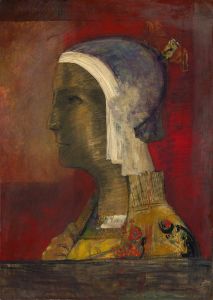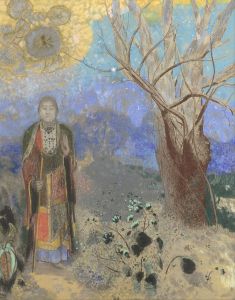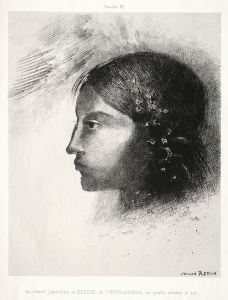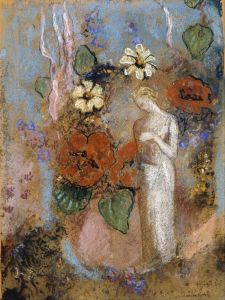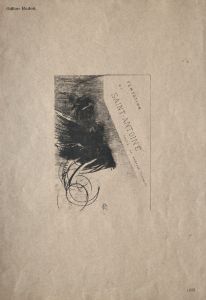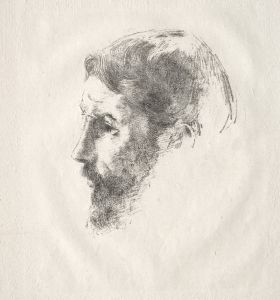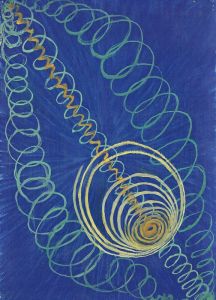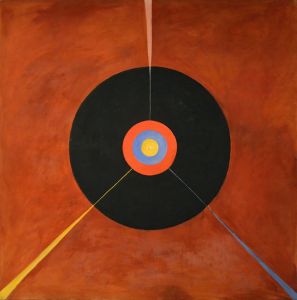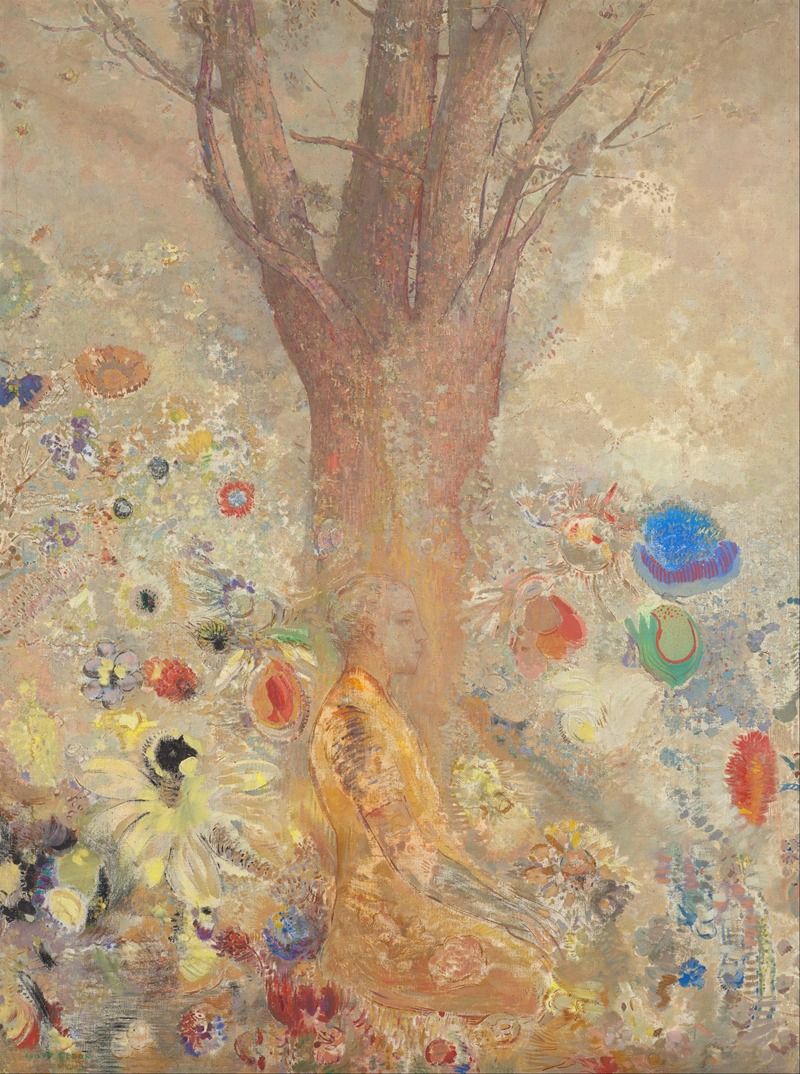
The Buddha
A hand-painted replica of Odilon Redon’s masterpiece The Buddha, meticulously crafted by professional artists to capture the true essence of the original. Each piece is created with museum-quality canvas and rare mineral pigments, carefully painted by experienced artists with delicate brushstrokes and rich, layered colors to perfectly recreate the texture of the original artwork. Unlike machine-printed reproductions, this hand-painted version brings the painting to life, infused with the artist’s emotions and skill in every stroke. Whether for personal collection or home decoration, it instantly elevates the artistic atmosphere of any space.
Odilon Redon, a French symbolist painter, created a work titled "The Buddha," which reflects his fascination with spirituality and the mystical aspects of existence. Redon, born in 1840 in Bordeaux, France, was known for his unique approach to art, often blending dreamlike imagery with symbolic content. His works frequently explored themes of the subconscious, dreams, and the metaphysical, making him a pivotal figure in the Symbolist movement.
"The Buddha" by Odilon Redon is a testament to his interest in Eastern philosophies and religions, which were gaining popularity in Europe during the late 19th and early 20th centuries. This period saw a growing curiosity about Buddhism and other Eastern spiritual traditions, partly due to increased travel and cultural exchange between Europe and Asia. Redon, like many of his contemporaries, was intrigued by these ideas and incorporated them into his art.
In "The Buddha," Redon employs his characteristic style, which often includes soft, ethereal colors and a dreamlike quality. His use of pastels and oils allowed him to create a sense of otherworldliness, which is evident in this painting. The depiction of Buddha in Redon's work is not just a representation of the religious figure but also an exploration of inner peace and enlightenment, themes that resonated deeply with the artist.
Redon's interpretation of Buddha is not bound by traditional iconography. Instead, he imbues the figure with a sense of serenity and introspection, capturing the essence of meditation and spiritual awakening. The painting reflects Redon's broader artistic goals of transcending the material world and delving into the realms of imagination and spirituality.
Throughout his career, Redon was influenced by a variety of sources, including literature, music, and philosophy. He was particularly drawn to the works of Edgar Allan Poe and the music of Richard Wagner, both of which informed his artistic vision. This eclectic mix of influences is evident in "The Buddha," where the mystical and the symbolic converge to create a powerful visual narrative.
Redon's work, including "The Buddha," was well-received by his contemporaries and continues to be appreciated for its innovative approach to symbolism and spirituality. His ability to convey complex emotions and ideas through his art has cemented his place as a significant figure in the history of modern art.
"The Buddha" exemplifies Redon's mastery of color and form, as well as his ability to evoke a sense of mystery and wonder. It stands as a representation of his lifelong quest to explore the unseen and the unknown, inviting viewers to embark on their own journey of introspection and discovery.
Overall, Odilon Redon's "The Buddha" is a remarkable piece that captures the essence of his artistic philosophy. It serves as a bridge between the tangible and the intangible, offering a glimpse into the spiritual and the sublime. Through this work, Redon invites us to contemplate the deeper meanings of existence and the pursuit of enlightenment.






